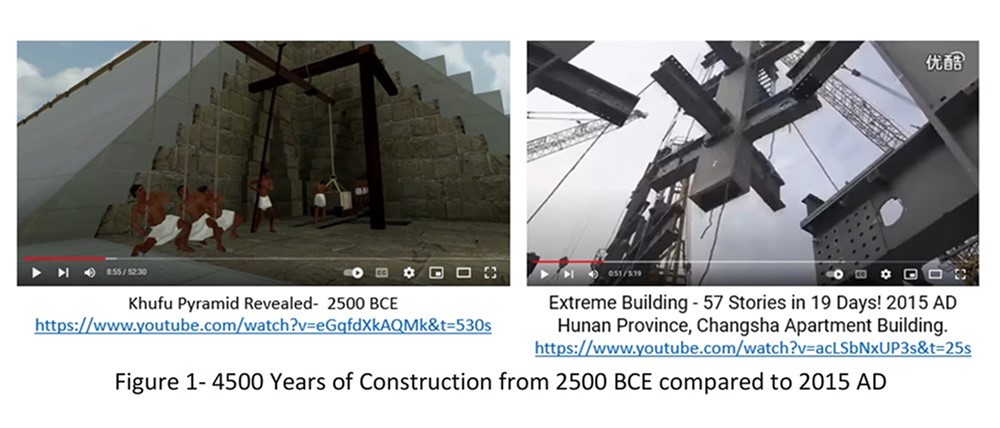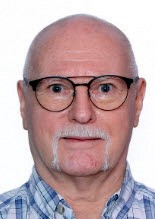LETTER TO THE EDITOR
Responding to Pat Weaver’s Article “The Evolution of Project Management”
22 December 2022
Reference: Weaver, P. (2022). The evolution of project management; PM World Journal, Vol. XI, Issue XI, November. Available online https://pmworldlibrary.net/wp-content/uploads/2022/10/pmwj123-Nov2022-Weaver-the-evolution-of-project-management.pdf
Dear Editor,
While I am in substantial agreement with much of what Pat has researched and written, having been involved with the late Peter Morris et al on the “Project Management Caught in a 1960’s Time Warp” project, I do not now nor ever have agreed with Peter Morris that “People have been managing projects for millennia, whereas project management only started to emerge as a discipline in the 1940s, evolving into modern project management in the 1960s.”[1]
There are two recurring themes in Patrick’s papers that I take issue with, and those are:
- There is a DIFFERENCE between “Old” “Project Management” and “Modern” Project Management
- Project management is not now and is unlikely ever to be, recognized or accepted as a “profession,” no matter how badly PMI or APM/APMG would like it to become one.
“OLD” vs. “MODERN” Project Management
Having “come of age” during the 1960s and wanting to follow in the footsteps of my father as a “construction superintendent” for Perini Corp (now Tudor-Perini), I joined the carpenters union as soon as I turned 18. Why? Because from the 16th-century Guilds up until pre-WWII, construction project managers came “up through the trades,” starting as apprentices, then becoming Journeymen, and finally ending their careers either as master carpenters or master masons and, given becoming a “master builder” was my career path objective, that was the appropriate career path to follow at that time.
Unbeknownst to me at the time, due to a shortage of “qualified” construction professionals required in the “post-WWII” baby boom and given that it took so many years to produce and validate “competent” construction managers through the trade route, the two existing professions of Engineering and Architecture saw an opportunity to “carve out” this “turf” for their own members.[2] This gave birth to universities from around the world but starting primarily in the USA and Australia, to offer formal degree programs in “Construction Management.” As I happened to fall into this transitionary period, I realized that if I ever expected to get a job as a Construction Project Manager, I had no choice but to augment or supplement my “hands-on” trade experience with a degree in construction management, which I followed, working for 30 years as a Union Carpenter from Apprentice to Journeyman to Master Carpenter to Union General Contractor, while going to school nights to get my Undergraduate and Masters Degrees and then working full time as a competency development trainer and mentor, to get my Ph.D.
Based on the “preponderance of the evidence” or the “center of gravity,” as shown in the light green highlighted items in attached Appendix I- A Selected Timeline of Project Management Tools, Techniques and Philosophies,” I am willing to challenge the thinking of Peter Morris and Pat Weaver that the vast majority of the tools and techniques we use today did NOT originate between 1940 and 1960, but instead between 1844 and 1944, particularly driven by the minds of practitioners like Fayol, the Gilbreath’s, Gillette and Dana, Gant and Frederick Taylor as well as the advice from Helmuth von Moltke, General Dwight Eisenhower and General Omar Bradley that is rarely mentioned in project management literature.
A more detailed look at why I disagree with Pat Weaver and the late Peter G.W. Morris can be seen by comparing these two videos, one showing the latest research on how the Great Pyramid of Khufu was constructed 4500 years ago and a case study showing an example of extreme building in China – A Time-lapse In Hunan Province, showing the Changsha Apartment Building and how they built 57 Stories in 19 Days.

When you compare the difference 4500 years has made you will find out there are more similarities than differences. The only three major differences are:
- A transition from the use of people performing manual labor to machines
- A transition from the use of manual calculations (i.e., the use of water leveling) to using computerized GPR Surveying instruments and related systems
- The introduction of more modern construction products, many if not most of which are petroleum based.
Other than those obvious examples, both projects were built from the ground up, both took advantage of extensive modularization, and both took advantage of both on and offsite fabrication of components. Leading to the conclusion that not all that much has changed, other than those 3 evolutions. And projecting that forward, given the advancements in Artificial Intelligence (AI), what prevents us from forecasting that the same progression will repeat, albeit at an accelerated pace?
More…
To read entire Letter to the Editor, click here
How to cite this work: Giammalvo, P. D. (2023). On the Evolution of Project Management, Responding to Pat Weaver’s November 2022 article; Letter to the Editor, PM World Journal, Vol. XII, Issue I, January. Available online at https://pmworldlibrary.net/wp-content/uploads/2023/01/pmwj125-Jan2023-Giammalvo-on-evolution-of-project-management-Letter-to-Editor-4.pdf
About the Author

Dr. Paul D. Giammalvo, CDT, CCE, MScPM, MRICS
Jakarta, Indonesia
![]()
Dr. Paul D. Giammalvo, CDT, CCE (#1240), MScPM, MRICS, is a Senior Technical Advisor (Project Management) to PT Mitratata Citragraha. (PTMC), Jakarta, Indonesia. www.build-project-management-competency.com. He is noted for the development and delivery of graduate level, blended learning curricula designed for the mid-career path, English as Second Language (ESL) professionals to develop competency in the local practitioner and build capacity for the local organizations. For 25+ years, he has been developing and delivering Project Management training and consulting throughout South and Eastern Asia Pacific, the Middle East, West Africa, and Europe.
He is also active in the Global Project Management Community, by playing a “thought leadership” role for the Association for the Advancement of Cost Engineering International, (AACEI) http://www.aacei.org/ since 1991; He has also been active in two IPMA member organizations: The Green Project Management Association (GPM) http://www.greenprojectmanagement.org/ where he served on the Certification Board of Directors for two years and the American Society for the Advancement of Project Management http://www.asapm.org/ for which he served for four years on the BoD as Director of Marketing. He also sat on the Board of Directors of the Global Alliance for Project Performance Standards (GAPPS), www.globalpmstandards.org, Sydney, Australia and is active as a regional leader. Currently, he is a compensated consultant to the International Guild of Project Controls. http://www.planningplanet.com/guild as the primary author of their “Compendium and Reference” as well as the chief architect of their competency-based credentialing program. http://www.planningplanet.com/guild/certification
He has spent 35 of the last 50 years working on large, highly technical international projects, including such prestigious projects as the Alyeska Pipeline and the Distant Early Warning Site (DEW Line), upgrades in Alaska and the Negev Airbase Constructors, Ovda, Israel and the Minas Oil Field in Rumbai, Sumatra. His current client list includes Fortune 500 major telecommunications, oil, gas and mining companies plus the UN Projects Office and many other multi-national companies, NGO organizations and Indonesian Government Agencies.
In addition to 45+ years of hands-on field experience, Dr. Giammalvo holds an undergraduate degree in Construction Management, his Master of Science in Project Management through the George Washington University and was awarded his PhD in Project and Program Management through the Institute Superieur De Gestion Industrielle (ISGI) and Ecole Superieure De Commerce De Lille (ESC-Lille) under the supervision of Professor Christophe Bredillet. “Dr. PDG” can be contacted at pauldgphd@gmail.com.
To view other original work by Paul Giammalvo, visit his author showcase in the PM World Library at http://pmworldlibrary.net/authors/dr-paul-d-giammalvo/
[1] Morris, P. W. G. The Management of Projects. Thomas Telford, London 1994.
[2] For more on the topic of professional societies being more sanctimonious than trade unions, see Friedson, E. (1988). Professional powers: A study of the institutionalization of formal knowledge (reprinted.). Chicago: University of Chicago Press and the published research of Andrew Abbott. Abbott, A. (1988). The system of profession: An essay on the division of expert labor. Chicago: University of Chicago Press









